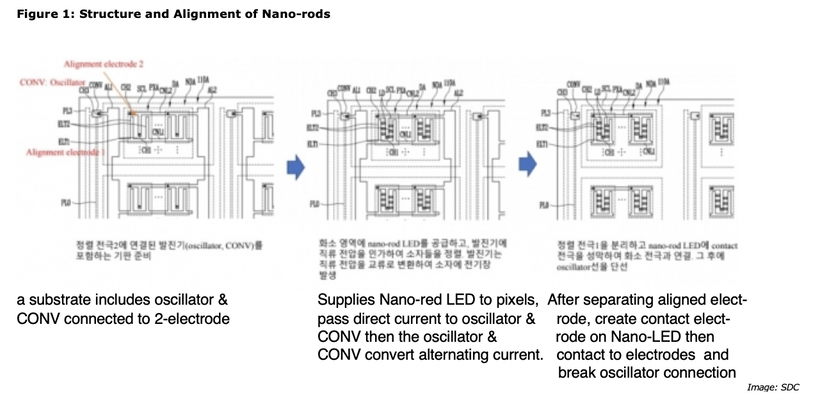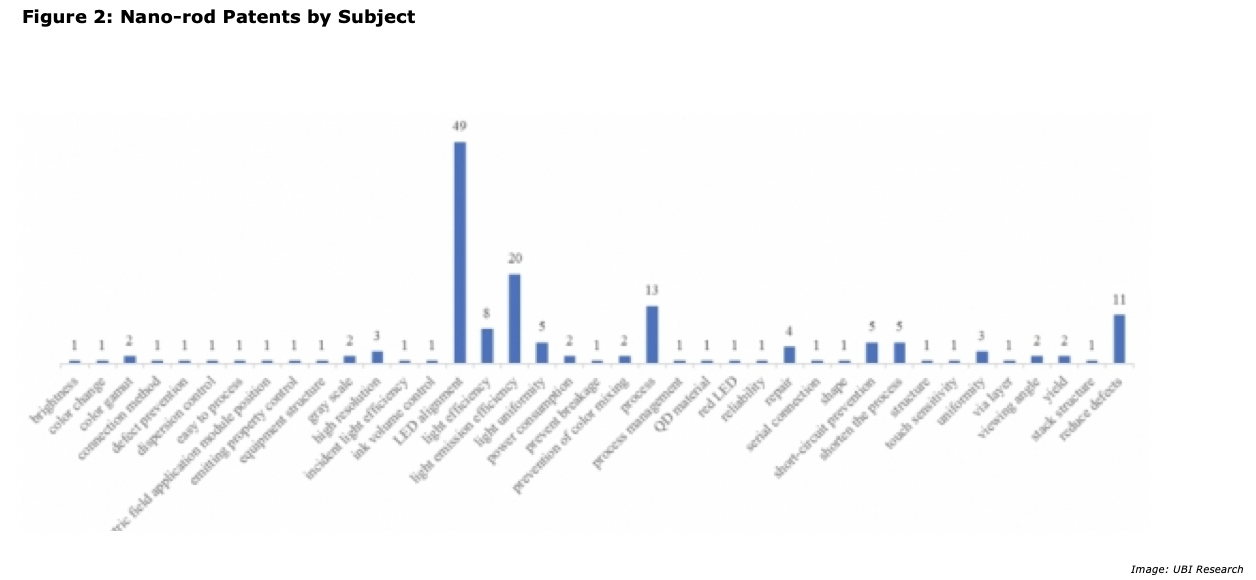Vertical Divider
Are QNEDs Ready to Replace Blue Emitters in QD-OLEDs?
UBI claims that Samsung Display has completed the development of the structure of its nanorod LED architecture for TV panels, a potential replacement for QD-OLEDs.
UBI Research said it analyzed 160 patents filed by Samsung Display related to QNED to draw its conclusion. The structure of how QNED will be composed has been completed, the research firm said.
UBI claims that Samsung Display has completed the development of the structure of its nanorod LED architecture for TV panels, a potential replacement for QD-OLEDs.
UBI Research said it analyzed 160 patents filed by Samsung Display related to QNED to draw its conclusion. The structure of how QNED will be composed has been completed, the research firm said.
The remaining task for Samsung Display is to find a way to maintain the number of aligned nanorod LEDs within each pixel, UBI Research said. Out of 160 patents, 49 were related to aligning the LED devices (LED alignment). There was also 20 patents related to light emission efficiency.
The number of Nanorod LEDs in the pixels, which determines the yield rate and resolution characteristics of the QNED panel, is determined by the number of LED within the ink, how many are shot in a pixel and how the LEDS that are shot in aligns. If each pixel have different number of nanorod LEDs, the voltage applied to each pixel differs between each other, causing a defect. Samsung Display developed a method to maintain the same number of nanorod LED per pixel, UBI Research said. It also developed an algorithm to maintain a uniform luminous in the panel even when the number of nanorod LEDs in each pixel differs from one another.
The number of Nanorod LEDs in the pixels, which determines the yield rate and resolution characteristics of the QNED panel, is determined by the number of LED within the ink, how many are shot in a pixel and how the LEDS that are shot in aligns. If each pixel have different number of nanorod LEDs, the voltage applied to each pixel differs between each other, causing a defect. Samsung Display developed a method to maintain the same number of nanorod LED per pixel, UBI Research said. It also developed an algorithm to maintain a uniform luminous in the panel even when the number of nanorod LEDs in each pixel differs from one another.
UBI seems to be relying on patents to determine readiness for MP. Patents provide a good sense of how technology will function but provide virtually no info on readiness for mass production. In this case, after printing the nano LEDs, using IJP, they must still be aligned in the substrate. In addition, there is the cost of 2 IJP for the nano LEDs and an additional 2 IJP for the QDs. Samsung Display has yet to make a decision regarding the next phase of Nano-rod development.
|
Contact Us
|
Barry Young
|


